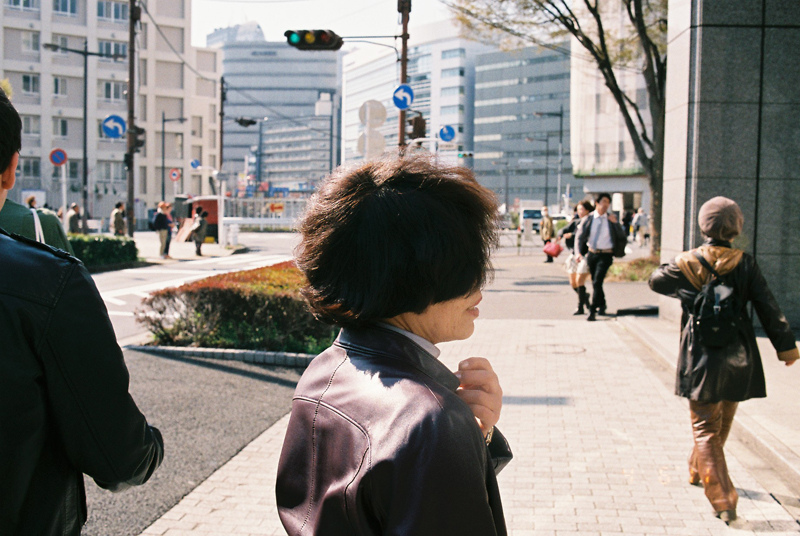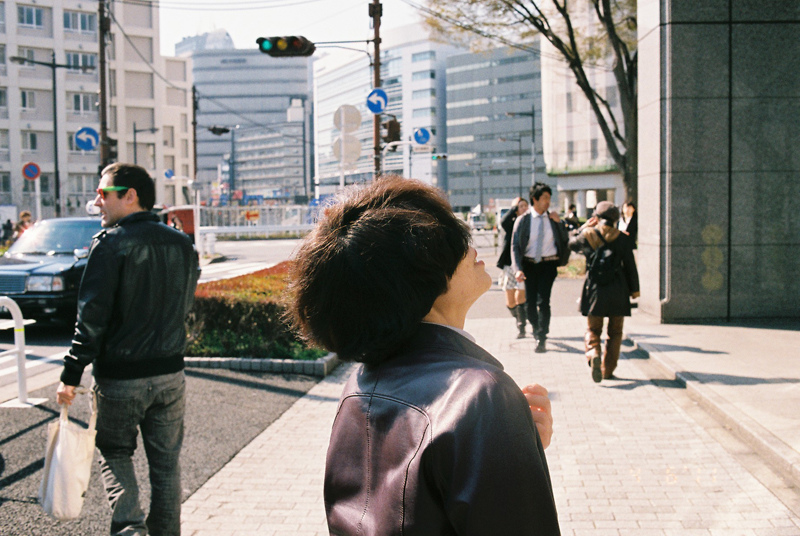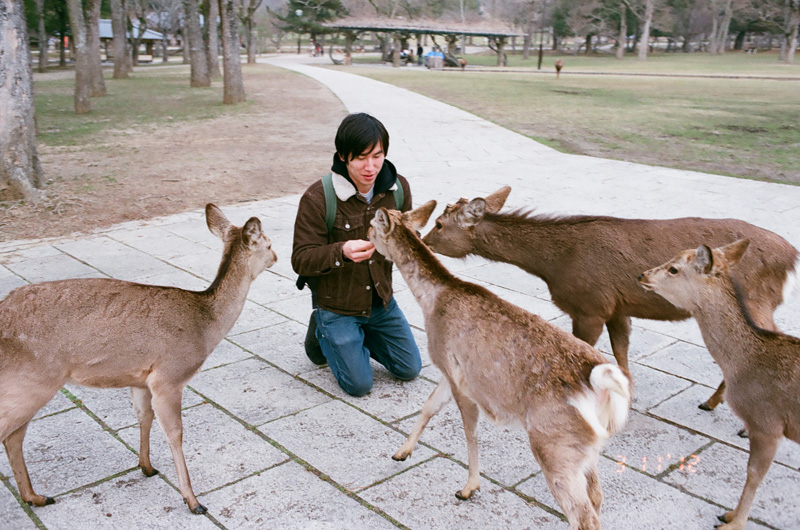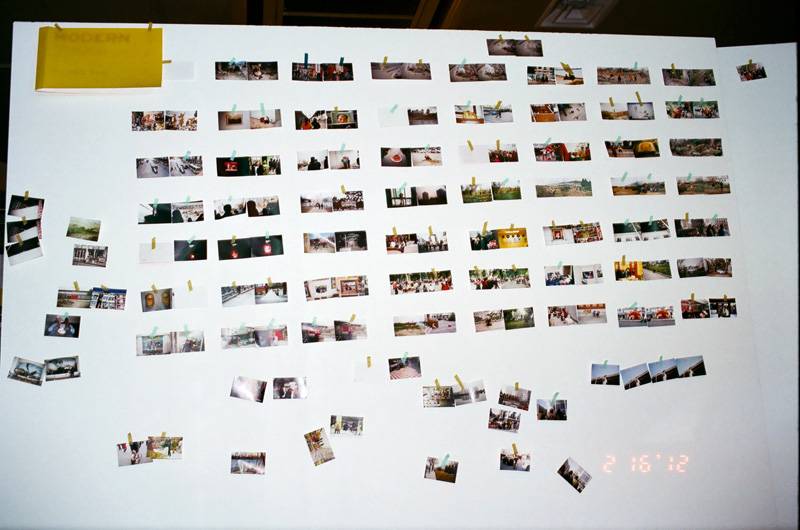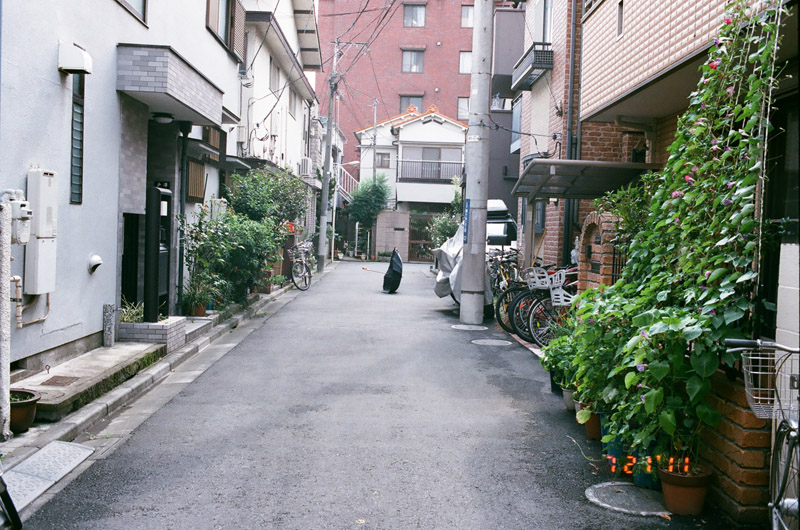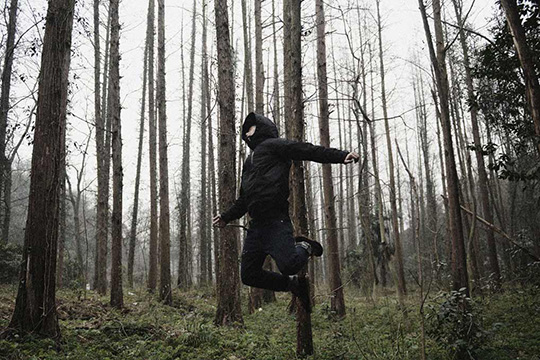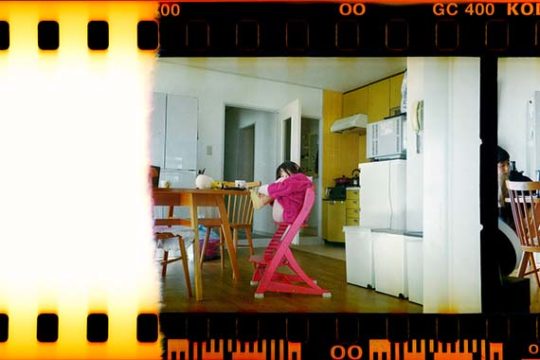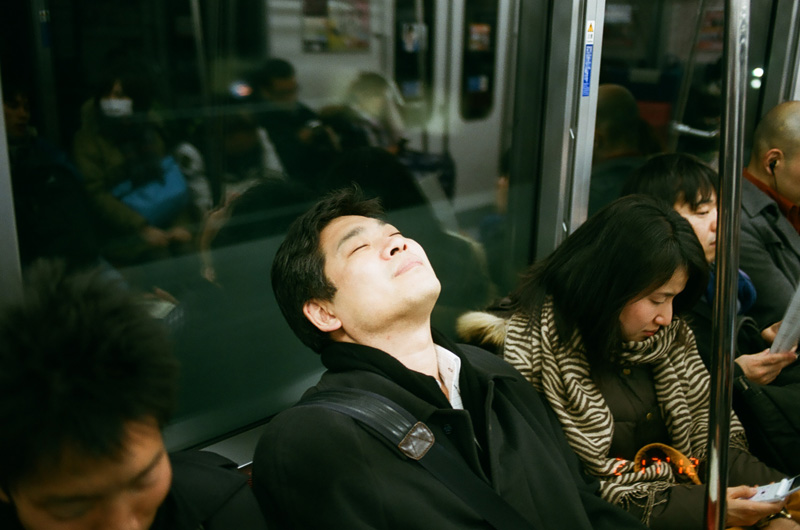
Taiwanese-American artist, Patrick Tsai, uses non-traditional photography and narrative techniques that he learned from filmmaking to tell stories of his life. His personal anecdotes include pursuing young love in China and fulfilling dreams in the post-earthquake Japan. The motivation behind crafting his stories is a simple one: he wants to connect with people all over the globe and share with them his perspective of the world.
美籍臺裔藝術家Patrick Tsai運用非傳統攝影和電影敘事,講述他生活中的故事。無論是在中國追求真愛,還是在震後的日本追尋夢想,Patrick的最終目的都是一樣的:與他人溝通,和他們分享自己觀察世界的角度。
Patrick’s previous work includes his photo diary My Little Dead Dick (2006-2007), Talking Barnacles (2011-2012), and the work-in-progress Barnacle Island. His photo book Modern Times (2007) was included in The Chinese Photobook exhibition, that was curated by London-based Dutch photographer team WassinkLundgren and American photographer Martin Parr. Recently, we spoke with Patrick about his projects, his works in process, and his life as an artist.
Patrick以前的作品包括影像日誌《My Little Dead Dick》(2006-2007), 《Talking Barnacles》 (2011-2012), 和正在進行中的 《Barnacle Island》。他的攝影書《摩登時代》(2007)入選美國攝影家Martin Parr和旅英荷籍攝影團隊WassinkLundgren策劃的“中國攝影書”巡回展。我們最近采訪了Patrick,聊了他以往和現在的作品,以及作為藝術家的生活狀態。
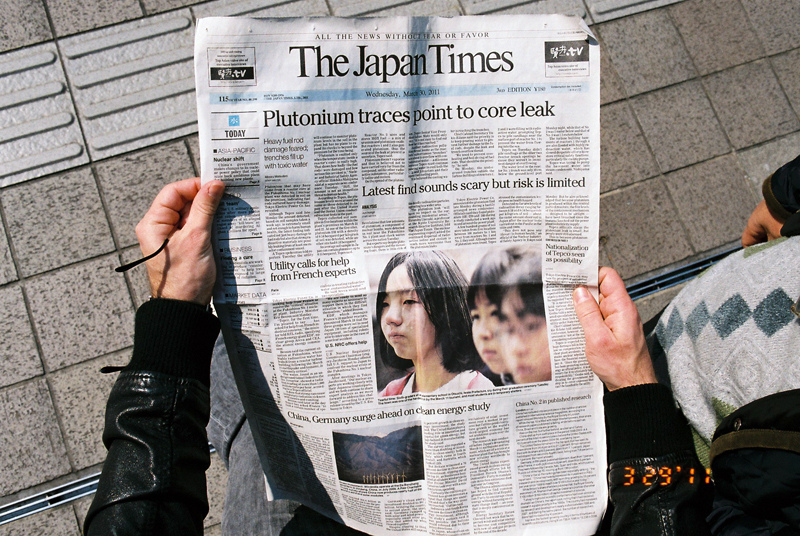
Neocha: What was the journey towards finding your own style like?
Patrick: I’ve always been interested in stories. When I was young, I had dreams of being a filmmaker. I grew up in a small town. My sister introduced me to all these foreign films, such as movies by Wong Kar Wai. I first went to school for filmmaking, but making a movie can take at least a year and it involves a lot of manpower as well as money. After university, I moved to Taiwan. Moving to a foreign country made me feel like it was easier to take photos, so I shifted my focus to photography.
It took me a while to establish photographic style. My first real project was My Little Dead Dick. That’s actually photography, but my ex-girlfriend Madi Ju and I used a narrative structure. We had a beginning, when we first met; then our story, where we quit our jobs; and one year later, a break-up. We carefully edited all the photographs to tell a story. That’s the first time I realized that I could combine my narrative and photography together to make a project stronger.
Neocha: 你是如果找尋到自己的風格的?
Patrick: 我一直很喜歡講故事,小的時候想拍電影。我在一個小鎮裏長大,通過姐姐我接觸到很多外國電影,比如王家衛的電影。我上過電影學院,但是拍電影至少要拍一年,需要很多人力和資金。我离开大學後搬到臺灣,因為在國外,拍照片變得相對容易。所以從那時起我開始拍照。
找尋到自己的風格花了我蠻長時間。我第一個真正的作品是《My Little Dead Dick》。我和前女友Mandi Ju運用的是正式意義上的攝影,但我們還用了敘事手法:我們倆的故事從我們相遇開始,接著我們辭職,一年之後我們分手。我們很仔細地編輯照片來講故事。這是我第一次認識到原來我可以結合敘事和攝影,讓一個故事更精彩。

Neocha: How would you describe the kind of work that you’re creating now?
Patrick: For the past few years, I have primarily been interested in writing, so my photography is not so much traditional photography any more. I seriously consider the text to be equally important as the pictures now. I’m most interested in stories and narratives. Most of my projects have a narrative even if it is based on real life. Either way, I’m a photographer-artist, or an artist-photographer. I guess that I’m also a storyteller.
Neocha: 你怎麽形容你的作品?
Patrick: 過去幾年,我主要對寫作有興趣,所以我的攝影作品不再是傳統意義上的攝影了。我真心認為文字和圖片一樣重要。我對故事、敘事感興趣,即使我的作品大多源於真實生活。你可以說我是攝影藝術家,或是藝術攝影家。另外,我還是個說故事的人。
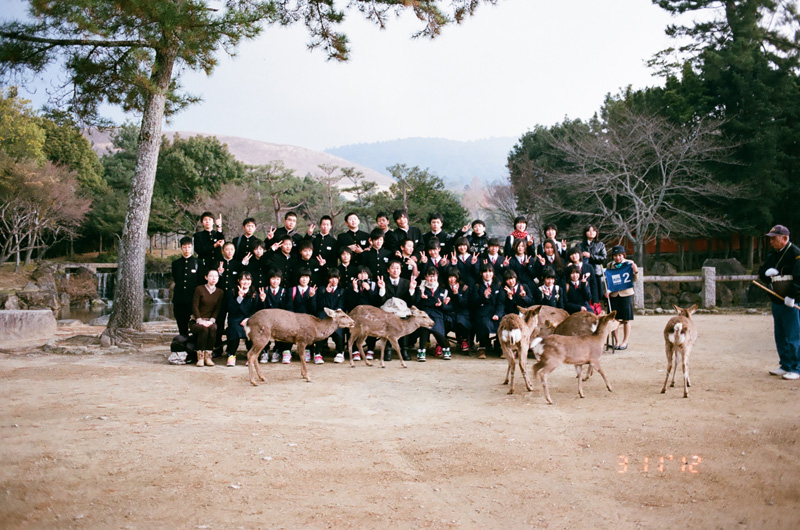
Neocha: What’s do you consider to be your biggest accomplishment so far?
Patrick: Talking Barnacles. It’s just because I posted every day for 365 days. I had to take lots of photos every single day. I never knew I could write before. I figured out a way that could work, that’s actually fun. It’s more like challenging yourself. When you were young, you had a simple dream like, “I want a book published”, “I want my work in a foreign exhibition.” But these are the kinds of things that stick with you.
I quoted Haruki Murakami in Talking Barnacles – he’s a major influence for me, probably the biggest influence. He wrote something that said it doesn’t really matter about the awards, what critics say, or how many books you release – it’s about challenging yourself every day, and in doing so, you are able to go higher and higher.
For that project, I pushed myself to the limit. When I was done, I was completely exhausted. I couldn’t do anything for two years. Everything in my thirty year long life, all my experience are in that project. It took me another two years before I felt I had something more to write about.
Neocha: 創作至今,你最大的成就是什麽?
Patrick: 我最好的作品是《Talking Barnacles》,因為一年365天我天天在網上更新,每天我都要拍很多照片。以前我不知道自己還能寫作。我發現我這麽做(寫作加攝影)能行,還挺好玩兒的。這是對我自己的挑戰。人年輕的時候夢想很簡單,比如“我想出書”或者“我想自己的作品在國外展出”,但是真正伴隨你的還是這類經歷。
我在《Talking Barnacles》裏引用了村上春樹的話 – 他對我的影響很大,可能對我起到最大的影響 – 他寫了類似的話:獎項、批評、出版過多少書都不重要,最要的是你每天都自我挑戰。你每天自我挑戰就會不斷提高,讓你的進步更持久。
《Talking Barnacles》這個作品我做到了極致,做完之後精疲力盡,接下來的兩年我沒有辦法再創作。我30年來的生活經歷全部包括在這個作品裏了,一直到兩年後我才覺得再次有東西可寫。
Neocha: Can you tell us a little about your current ongoing project?
Patrick: I have three photo diary projects, it’s like a trilogy that spans over ten years. About one year ago I moved from Tokyo to this island called Shodoshima. My new project, Barnacle Island is about life after I moved to this island.
Neocha: 能否談談你當下的作品?
Patrick: 我有三個影像日誌,是跨度十年的三部曲。一年前我從東京搬到小豆島,《Barnacle Island》記錄了我在島上的生活。

Neocha: Using the format of daily entries, how are you able to differentiate your work from bloggers?
Patrick: Photography for me, of course, is very important. But editing is also very, very important – even more important than taking pictures. I was very strict about everything in Talking Barnacles. If I had one picture here that’s very nice, and the next photo was also very beautiful, but the colors didn’t match or if they were too similar, I would just take it out and choose another more complementary photo. I want all the photos for the entire project to complement one another.
I am actually not a great photographer. I cannot take a wonderful, perfect photo. There are lots of photographers that take one picture and go, “this is an amazing picture, this is perfect.” I’m not interested in that. The story is a tool that makes the photographs much more meaningful. I guess that’s another reason My Little Dead Dick became so popular.
I start my projects by just going and doing it one day at all time, but I will already have an idea for the whole thing. I can see where the project will go in my head, being able to take a step back and seeing the bigger picture is a great thing. But I can only do that with my art, I cannot do that with my life.
Neocha: 你和一般的博客作者有什麽不一樣?
Patrick: 攝影對於我來說,拍攝很重要,但編輯非常重要。編輯比拍攝本身更重要。我對待《Talking Barnacles》的方方面面都很嚴格。如果我拍了一張照片很不錯,第二天又有一張很棒的照片,但如果兩張照片顏色不匹配,或者太接近,我就會換一張照片,這樣兩張照片就會互補。整個項目的全部照片相輔相成,形成一個整體。
我拍照其實不是太好,沒法拍一張完美無暇的照片。有很多攝影師拍了一張照片,會說,“這張照片拍得太棒了,太完美了”,但我對這方面不是很感興趣。講故事的手法讓攝影更加有意義,我想這大概就是為什麽《My Little Dead Dick》那麽受歡迎的原因。
我的作品是靠一天天的更新積累,但我已經有個大概的想法,在我腦中下一步怎麽走已經很清楚。對於我的藝術,我可以這麽做,但對人生,我做不到這麽規劃。

Neocha: Do you feel you are between two cultures? How does it feel to tell your very personal stories to the whole world?
Patrick: I don’t always feel that I belong to America. When I moved to Taiwan, I didn’t feel I belonged to Taiwan. I always feel like an outsider – I guess that’s what my work is about and how I became an artist.
In Talking Barnacles, that was the very first time I felt like I was at home. Talking Barnacles is about when I live in Japan after the earthquake, following my dream to become a photographer, like a serious photographer. The earthquake was a very big thing, but I decided to focus on my neighborhood. I photographed and wrote everything about my neighborhood. I started to photograph everything that I really appreciated, so that is why it was the first time that I didn’t feel like an outsider. I was doing the best work of my life at that time.
Another big thing is that the more you talked about yourself, the more people can relate. It’s a very interesting thing. It’s about me but it’s not really about me. When I talked about my life or when I was confused, other people can read about all that stuff. People tend to have similar experiences; so the more personally you talk about yourself, the more people can relate to it.
Neocha: 你覺得自己夾隙在兩種文化之間嗎?和全世界講自己的故事,感覺如何?
Patrick: 我從不覺得自己屬於美國。我搬到臺灣之後,也不覺得自己屬於臺灣。我總覺得自己是個局外人,也許這就是我的作品的主題:我成為藝術家的過程。
《Talking Barnacles》時期,我第一次覺得自己有個家。這個作品是關於我在震後日本的生活,追求夢想成為真正的攝影師。地震是很嚴重的事,但我決定關註鄰裏街坊,因為這是我個人在震後的發現。我開始拍攝我所珍愛的人、物,因為我第一覺得自己不再是局外人。那時,我完成了我至今最好的作品。
另外,很重要的就是,你談自己談得越多,其他人越能有共鳴,這就很有趣。我在談我,但又不是在談我,因為我在講述自己生活、描述自己的疑惑的時候,別人讀到我寫的這些東西,他們有相同的經驗,所以你講得越個人,別人越容易共鳴。
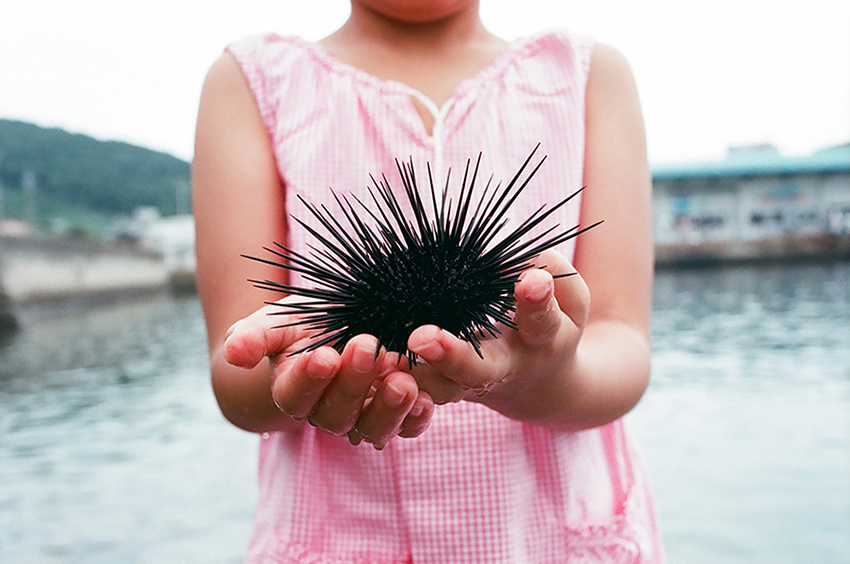
Neocha: How do you juggle between being an artist and making money?
Patrick: I already came to terms that my work will not make money, and I am fine with that. The reason why I do what I do was never for money in the first place, but to convey something to other people.
I have always felt like an outsider, so art is my way to bridge the gap and connect with people, to share with them how I see the world. If I can get them to see and understand, and hopefully be moved by that then I am satisfied.
Neocha: 面對藝術創作和經濟收入的沖突,你掙紮過嗎?
Patrick: 我已經很清楚自己的作品是掙不到錢的,我也不覺得有什麽,因為我做這些作品的原本也不是為了掙錢。我是為了向他人傳達一些東西。
我總覺得自己是局外人,所以藝術是我和他人溝通的方式,藝術能連接我和他人。這樣,我能和他們分享我看世界的角度。如果他們能夠看到並能理解我的作品,如果還能有一點感動,我就滿足了。

